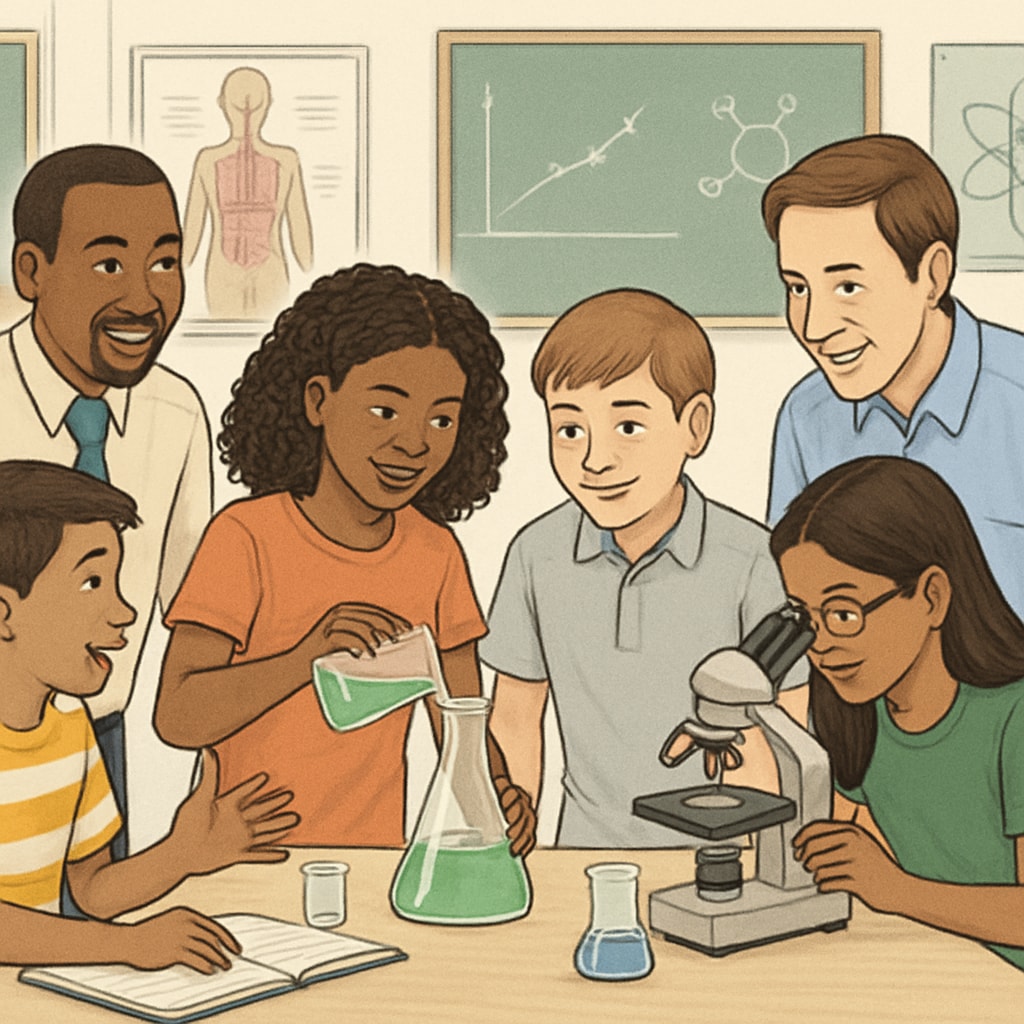The OpenSciEd community is reshaping how middle school science education is approached. By offering a collaborative platform for educators, OpenSciEd not only enhances resource sharing but also drives innovative teaching methods. This initiative is crucial for bridging the gaps in K-12 science education and enabling transformative growth in classrooms. The OpenSciEd community demonstrates how collective efforts can create a sustainable impact on the way science is taught and learned.
What is OpenSciEd and Why It Matters
OpenSciEd is a nonprofit initiative focused on developing high-quality, open-source science curricula designed to align with the Next Generation Science Standards (NGSS). These curricula offer an equitable approach to science education, emphasizing hands-on, inquiry-based learning. For middle school educators, OpenSciEd provides a free platform to access instructional materials, professional development resources, and a supportive network of like-minded educators.
The significance of OpenSciEd lies in its mission to make science education accessible to all students. By eliminating barriers such as expensive textbooks and limited teacher training, the initiative empowers educators to deliver engaging, NGSS-aligned lessons that prepare students for future scientific challenges.

Building Connections: The OpenSciEd Community
One of the most transformative aspects of OpenSciEd is its community. Teachers, researchers, and education leaders come together to share experiences, best practices, and innovative teaching strategies. This collaborative environment fosters a sense of belonging and encourages continuous professional growth.
Through forums, webinars, and in-person workshops, the OpenSciEd community offers multiple avenues for educators to connect. For example, teachers can exchange insights about how to adapt lessons for diverse classrooms or address common challenges in implementing NGSS standards. This collective wisdom strengthens the entire science education ecosystem.
Key benefits of the OpenSciEd community include:
- Access to free, high-quality resources designed for NGSS alignment
- Opportunities for professional development and peer learning
- A platform to collaborate on innovative teaching practices
- Support for addressing equity and inclusion in science education
Transforming K-12 Science Education
By leveraging the power of collaboration, OpenSciEd is creating a ripple effect in the K-12 education landscape. The initiative not only equips educators with the tools they need but also inspires students to engage with science in meaningful ways. As a result, classrooms using OpenSciEd resources often report increased student curiosity and participation.
For example, OpenSciEd’s focus on real-world problems helps students relate science concepts to their daily lives. Whether investigating climate change or exploring the human body, these lessons encourage critical thinking and problem-solving skills. This approach not only meets educational standards but also prepares students to tackle global challenges.

Moreover, OpenSciEd’s commitment to equity ensures that every student, regardless of background, has the opportunity to excel in science. By providing open-access resources and encouraging diverse perspectives, the initiative addresses systemic disparities in education.
Looking Ahead: The Future of Science Education
The OpenSciEd community exemplifies how collective action can lead to systemic change. As more educators join the network, the potential for innovation in K-12 science education grows exponentially. The initiative serves as a model for how open-source resources and collaborative communities can address global education challenges.
In the coming years, OpenSciEd aims to expand its reach, offering resources for additional grade levels and subject areas. The ultimate goal is to create a world where every student has access to high-quality science education, regardless of their circumstances.
For educators, joining the OpenSciEd community is an invitation to be part of this transformative journey. By working together, we can inspire the next generation of scientists, innovators, and problem solvers.
Learn more about OpenSciEd and how to get involved: OpenSciEd Official Website.
Additional Resources:
Readability guidance: Short paragraphs, bullet points, and clear transitions ensure the article remains accessible. Active voice and concise sentences enhance engagement.


